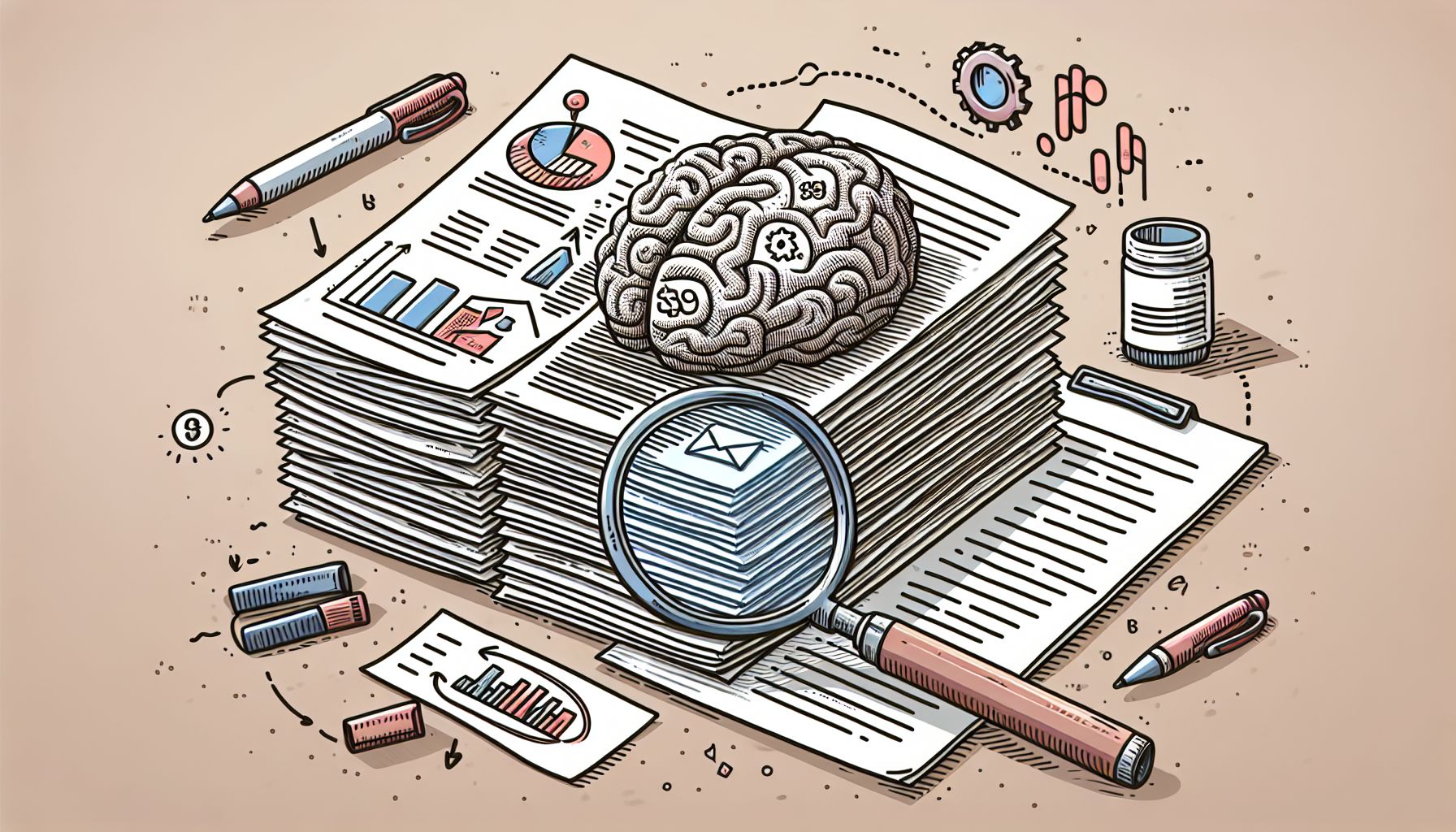📌 Let’s explore the topic in depth and see what insights we can uncover.
⚡ “Say goodbye to all-nighters spent plowing through dense research papers. Discover how to distill lengthy documents into potent key points, and revolutionize your reading game today!”
Are you grappling with a mountain of documents and research papers? Are your days and nights merging into one seemingly endless cycle of reading, highlighting, and taking notes? If you’re nodding your head in agreement, then this blog post is your lifeline. In this digital age, the amount of information available to us is nothing short of overwhelming. Data, facts, theories, analyses, and insights are just a click away. While this access to information is a boon, it can also be a bane when you need to digest lengthy documents or complex research papers in a limited time frame. But worry not! By the end of this post, you’ll have a handy toolset to summarize these documents into key points effectively. So, buckle up as we take a deep dive into the world of summarizing!
📜 Understanding the Art of Summarization

"Condensing Volumes to Vital Points"
Summarizing is not about chopping down a document or a research paper haphazardly. It’s an art, a delicate process of distilling the essence of a piece of text while maintaining its overall meaning and context. Why is summarizing important? Summarizing allows you to: Understand the main ideas and underlying themes of a document. — let’s dive into it. Improve your comprehension and retention of information. — let’s dive into it. Communicate the gist of a document to others effectively. — let’s dive into it.
🧠 Embrace Active Reading
Active reading is like having a conversation with the document or research paper. It involves questioning, connecting, and evaluating the text as you read. Here’s how you can do it:
**Preview the Material
** Just like you wouldn’t jump into a pool without testing the water, you shouldn’t dive into a document without previewing it. Scan the titles, subheadings, bullet points, and highlighted text. This will give you a roadmap of what’s ahead.
**Ask Questions
** Be a curious reader. Ask questions like: What is the main argument? What evidence supports the argument? Are there any counterarguments? This will guide your reading process.
**Highlight and Annotate
** Don’t just passively read the text. Engage with it. Highlight significant points, underline keywords or phrases, write notes in the margins. 🔍 Interestingly, like leaving breadcrumbs for you to follow later.
**Summarize as You Go
** After reading a section, pause and summarize it in your own words. This will ensure you’ve understood the text correctly.
🪓 Breaking Down the Content
Once you’ve actively read the document, it’s time to break it down into manageable chunks.
**Identify the Main Ideas
** Look for the thesis statement in the introduction and the topic sentences in each paragraph. They usually carry the main ideas.
**Note Down Supporting Details
** 🧩 As for These, they’re the evidence, examples, data, or quotes that support the main ideas. They add depth to your summary.
**Spot the Transitions
** Words like ‘however’, ‘in addition’, ‘on the other hand’, indicate a shift in the argument or the introduction of a new idea. 🧩 As for They, they’re crucial in understanding the flow of the text.
**Watch for Repetition
** If an idea or a point is repeated multiple times, it’s likely important. Make sure to include it in your summary.
🎯 Writing the Summary
Writing the summary is like assembling a puzzle. You need to piece together the main ideas and supporting details in a coherent and concise manner. Here are some tips:
**Start with the Thesis Statement
** Your summary should start with the main argument or the central idea of the document. This sets the tone for what’s to follow.
**Follow the Original Structure
** Stick to the organization of the original text. If the document starts with an introduction of a concept, follows with a case study, and ends with a conclusion, your summary should do the same.
**Use Your Own Words
** Don’t copy-paste sentences from the original text. Rewrite them in your own words. This shows that you’ve understood the material.
**Keep it Brief
** A summary should be a fraction of the original text. If the document is 10 pages long, aim for a 1-page summary. If it’s a 30-page research paper, aim for a 3-page summary.
**Revise and Edit
** Your first draft won’t be perfect. So, revise and edit. Check for clarity, coherence, and conciseness.
🧭 Conclusion
Summarizing long documents and research papers into key points can seem like an uphill task. But with the right strategies, it can be a smooth sail. Remember, summarizing is not about mindless reduction. It’s about mindful extraction of the essence. It’s not about losing sight of the forest for the trees. It’s about seeing the forest and the trees. So, the next time you’re faced with a lengthy document or a complex research paper, don’t panic. Embrace active reading, break down the content, and write your summary with confidence. And voila, you’ve tamed the paper beast!
Happy summarizing! 📚👓📝
🌐 Thanks for reading — more tech trends coming soon!
